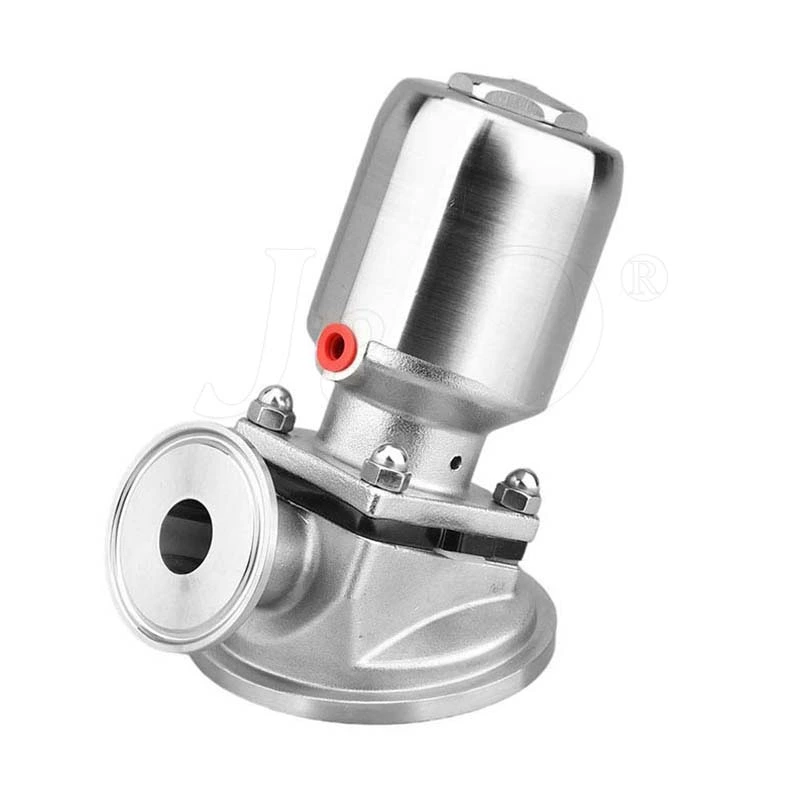Common Failures And Preventive Measures Of Sanitary Diaphragm Valves
Sanitary Diaphragm Valve Fault phenomenon:
(1) Leakage on the valve cover sealing surface. The diaphragm valve head is composed of an upper and lower valve cover and a diaphragm fastened with bolts. The chamber between the upper valve cover and the diaphragm introduces the emergency shut-off oil of the main engine lubricating oil system. This sealing surface has continued to leak since the unit was put into operation, and the effect of multiple treatments has not been good.
(2) The diaphragm ruptures, causing the oil pressure to disappear and the diaphragm valve to open. The diaphragm of the diaphragm valve ruptures, and the lubricating oil flows to the high-temperature pipeline, so the unit has to be shut down and replaced with a new diaphragm. After inspection, it was found that there was a 3 mm diameter perforation at the contact point between the diaphragm and the spring tray.
Cause analysis:
(1) The adjustment valve (for pressure relief) for adjusting the oil pressure is a needle valve. Due to the influence of factors such as vibration, it will gradually close during operation, causing the oil pressure to rise slowly. If the adjustment is not timely, the diaphragm will operate under an overpressure of 0.80-0.85 MPa, which accelerates the damage of the diaphragm. In addition, when the main engine was conducting an overspeed test, the speed increased to about 3,300 r/min. Due to untimely adjustment, the oil pressure of the diaphragm valve once increased to 0.9 MPa, causing short-term overpressure.
(2) The design width of the upper and lower valve cover sealing surfaces is too small. Inspection found that the sealing width (extrusion deformation part) of the leaking diaphragm is less than 5 mm as a whole.
(3) The thickness of the upper and lower valve cover plates is only 5 mm. According to the calculation of the upper valve cover diameter of 240 mm and the oil pressure of 0.8 MPa, the pressure is about 36,170 N. The valve cover plate is deformed by force, and the sealing plane of the upper and lower valve covers has an inward opening, which further narrows the sealing surface and aggravates the leakage.
(4) The diaphragm installation process is unreasonable. The maintenance personnel are not familiar with the structural principle of the diaphragm valve. When installing the new diaphragm, they did not take measures to loosen the adjustment nut to make the spring lose its force, but carried out the installation with the diaphragm valve open. Because the spring tray is in a high position, the diaphragm is in contact with the upper valve cover, but there is a gap of 20 mm with the lower valve cover. In order to fasten the three together, long-rod bolts are used to force the connection (the purpose is to overcome the elastic force of the spring). At this time, the bolt hole of the diaphragm is pulled and deformed, which is easy to cause damage. In addition, the position of its bolt hole is offset inward relative to the bolt hole of the valve cover and becomes elliptical, the sealing surface becomes narrower, and the sealing effect becomes worse.
(5) There are bubbles in the gel part of the diaphragm, and there is stratification inside. The maintenance personnel did not check carefully before replacement and failed to discover it in time, leaving hidden dangers after installation.
(6) Accidental damage to the diaphragm. The diaphragm is not properly protected during storage and installation. The diaphragm contacts corrosive liquids or collides and squeezes with sharp parts of tools and parts (such as raised corners of the spring tray), damaging and scratching the diaphragm surface. Failure to handle it in time causes leakage hazards.
